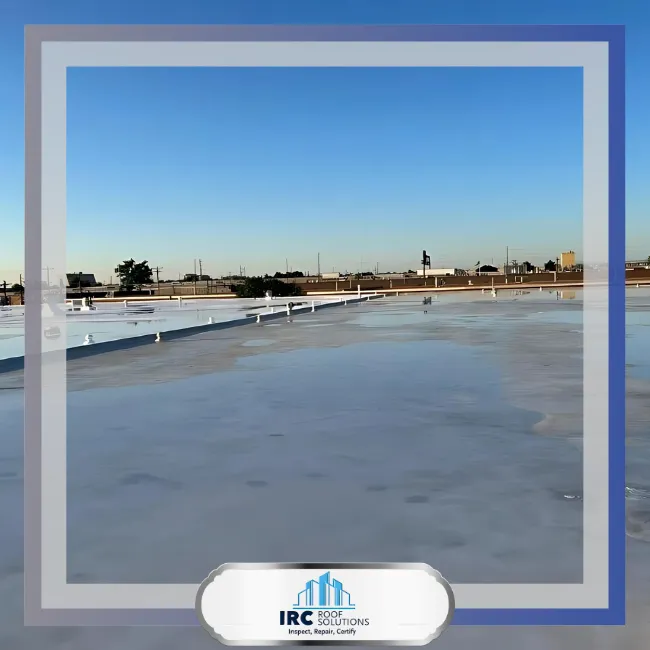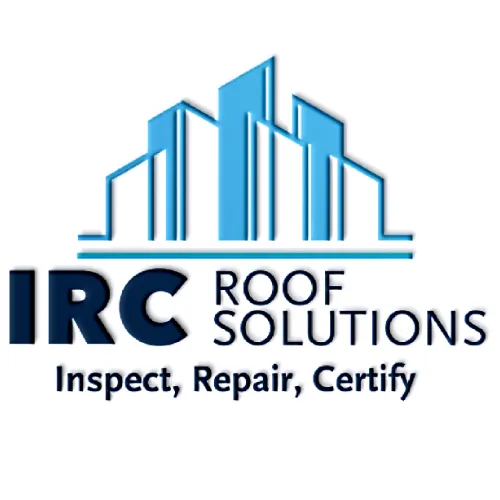Sponsored





Re-Roof in Pacoima, CA
Expert Roof Replacement For Long-lasting Protection
Give your property a fresh start with professional re-roofing services from Pacoima’s trusted contractors. Whether your roof is worn out, damaged, or beyond repair, local experts provide high-quality materials and craftsmanship to ensure durability and curb appeal. Browse our directory to find skilled re-roofing specialists in Pacoima and schedule your consultation today.
Re-roof - Pacoima - Why Hire a Professional Re-roof Service
Protecting Your Property with Expert Roof Replacement Solutions
Understanding the Re-roof Process
Re-roofing is the process of replacing your existing roof with a new one, either by removing the old materials entirely or by installing a new layer over the existing roof, depending on its condition. In Pacoima, where roofs face intense summer heat, sudden seasonal rains, and occasional windstorms, re-roofing can be essential to maintain the safety, appearance, and energy efficiency of your property.
Unlike minor repairs, re-roofing addresses the entire roofing system, ensuring long-term protection and often increasing your property’s market value.
Why Hire a Professional Re-roof Service in Pacoima
Re-roofing is a complex project that involves more than just laying new materials. Professionals perform a thorough inspection to identify any structural issues, ensure proper ventilation, and select materials suited to Pacoima’s climate.
Licensed roofing contractors have the experience, equipment, and safety training needed to complete the job efficiently and to code. They also handle permitting, waste removal, and final inspections to ensure your new roof meets all local building regulations.
Benefits of Professional Re-roofing
Longevity: A properly installed new roof can last decades, providing reliable protection.
Improved Energy Efficiency: Modern roofing materials reflect heat better, reducing cooling costs in Pacoima’s hot summers.
Enhanced Property Value: A new roof boosts curb appeal and resale value.
Warranty Coverage: Many new roofs come with manufacturer warranties that protect your investment.
The Professional Re-roofing Process
Inspection: Assessing the current roof’s condition to decide whether to remove or overlay existing materials.
Preparation: Removing old roofing (if required), repairing decking, and ensuring proper ventilation.
Installation: Installing new underlayment, flashing, and roofing materials with precision.
Finishing: Sealing, cleaning up debris, and conducting a final inspection for quality assurance.
When to Consider a Re-roof in Pacoima
Signs that you may need a re-roof include widespread shingle damage, persistent leaks, sagging roof sections, or a roof that has reached the end of its lifespan (typically 20–30 years for asphalt shingles).
Severe storm damage or significant water intrusion may also warrant a full re-roof rather than repeated repairs.
Final Thoughts
Re-roofing is a major investment in your property’s safety, energy efficiency, and value. By hiring a professional re-roof service in Pacoima, you ensure the job is done right, using high-quality materials and expert craftsmanship for lasting results.
Your Trusted Roofing Experts

Google: 4.9 stars
Commercial Roofing, Roof Repair, Roof Maintenance, Roof Coating, Emergency Roofing Services
(818) 571-7892
Santa Clarita, CA 91350
Website: www.ircroofs.com





Owen & Sons Roofing
14117 Hubbard St #475, Sylmar, CA 91342
Roofing Contractor
Phone: (747) 298-7200
Hours: Daily, 5 AM - 10 PM
Arias Roofing Corp
12627 Van Nuys Blvd, Pacoima, CA 91331
Roofing Contractor
Phone: (818) 791-3190
Hours: Opens at 7 AM, Mon-Fri
ASteam AC Install
11003 San Fernando Rd, Pacoima, CA 91331
Roofing Contractor
Phone: (818) 474-9766
Hours: Open 24 hours, 7 days a week
Best Team Roofing
11150 Glenoaks Blvd #436, Pacoima, CA 91331
Roofing Contractor
Phone: (818) 877-4656
Hours: Daily, 5 AM - 10 PM
People Also Ask
Re-roofing generally refers to installing a new roof system over an existing roof without a full tear-off. The goal is to restore weatherproofing and extend service life with less disruption than replacement. Whether it is feasible depends on deck condition, moisture in the assembly, number of existing layers, and local code. Because the old roof remains in place, crews evaluate weight, drainage, and transitions carefully to avoid creating trapped moisture or uneven surfaces. Re-roof solutions can include single-ply overlays, modified bitumen, or restoration coatings when the substrate is sound. A roof assessment—often including core cuts or infrared scanning—determines if the existing system is dry, stable, and compatible with the new membrane and attachment method.
Re-roofing suits roofs that are nearing end of life but remain structurally sound, with limited localized defects and dry insulation. It is often considered when there are no widespread leaks, the deck is intact, and building codes permit an additional layer. Re-roofing can reduce labor, disposal, and operational disruption compared with tear-off. However, if insulation is saturated, the deck is deteriorated, or failures are systemic, replacement is usually the better long-term solution. A moisture survey and detailed inspection help determine the best path by documenting conditions, anticipated lifespan, and compatibility of the overlay with edges, penetrations, and existing flashings so the new system performs as intended.
Most jurisdictions limit the number of roof layers, commonly to two, to manage weight and allow proper inspection of underlying materials. If the building already has the maximum layers or exhibits trapped moisture, a tear-off is typically required. Codes also address fire ratings, wind uplift resistance, insulation R-values, edge securement, and slope for drainage. During planning, the contractor verifies local requirements, manufacturer specifications, and structural capacity. Meeting these standards may involve adding tapered insulation, upgrading edge metal, or changing attachment methods. Compliance ensures the new assembly is eligible for warranty and reduces risk of performance issues related to insufficient fastening, thermal performance, or inadequate drainage after the overlay is installed.
The process begins with condition assessment and moisture testing, followed by surface preparation such as repairs, cleaning, and removal of loose materials. Crews may install vapor barriers or separator sheets to isolate incompatible substrates. Insulation upgrades—flat or tapered—are added as needed to reach R-value targets and improve drainage. The new membrane is installed by fully adhered, mechanically fastened, or heat-welded methods, with careful detailing at edges, curbs, drains, and penetrations. Quality control includes seam checks, pull tests, and water-flow verification. Work areas are staged to minimize disruption and maintain watertightness daily. The project concludes with a final inspection, documentation, and warranty submission if applicable.
Re-roof projects are an opportunity to improve thermal performance by adding or replacing insulation to meet current standards and energy goals. Polyisocyanurate, mineral wool, or other boards can be installed in single or multiple layers to reduce thermal bridging. Tapered insulation helps create positive slope and mitigate ponding water, which also supports durability. Surface reflectivity may be improved by selecting a light-colored membrane or applying a compatible reflective coating. Proper air and vapor control layers reduce condensation risk. The result is a roof assembly that not only resists weather but also contributes to occupant comfort and operational efficiency without requiring a full tear-off.
Because overlays can change elevation and slope at edges and penetrations, drainage must be reviewed carefully. Crews confirm that internal drains, scuppers, and gutters remain the low points and that water flows freely after the new layers are added. Tapered insulation and crickets are commonly used to redirect water toward drains and away from curbs or walls. During installation, drain strainers are kept clear and flow tested. Addressing low spots before overlaying prevents long-term ponding that can accelerate membrane aging. Final documentation typically includes photos of water tests and notes on improved drainage so owners can verify performance following completion.
Re-roof timelines vary with roof size, system type, number of penetrations, weather, and access. Overlays often finish faster than full replacements because less demolition and debris handling are required. Scheduling considerations include material lead times, crane access, protection of entryways, and coordination with facility operations to limit disruptions. Crews typically phase work to keep the roof watertight at the end of each day. Complex detailing at parapets, skylights, or equipment curbs may extend duration. A clear schedule with defined milestones and communication protocols helps maintain safety and continuity for building occupants throughout the project.
Warranties for re-roof projects may include manufacturer coverage for materials and system performance and a contractor workmanship warranty. Eligibility depends on meeting specification details such as approved substrates, attachment patterns, edge securement, and documented maintenance. Some manufacturers limit coverage if an overlay is installed over wet insulation or incompatible materials, so pre-project moisture surveys and separator sheets are important. Owners should review coverage terms, duration, exclusions, and required maintenance. Keeping records of inspections and repairs helps preserve warranty validity and provides a clear path for addressing issues that might arise after completion.
Overlay projects are designed to reduce disruption, but coordination is still essential. Contractors plan staging to maintain safe access points, protect HVAC intakes, and manage odors or adhesives. Noise and foot traffic are coordinated around sensitive areas, and work zones are secured to protect occupants and property. Daily housekeeping keeps pathways clear and prevents debris from entering drains. Clear communication regarding start times, crane lifts, and temporary closures helps occupants plan accordingly. Safety practices include fall protection, fire prevention, and weather monitoring so the roof remains watertight at the end of each shift.
Investment level is driven by roof area, existing conditions, chosen membrane type, insulation thickness, number of penetrations, and edge or curb detailing. Additional elements—such as tapered insulation for drainage, separator sheets for compatibility, or code-driven upgrades to edge securement—affect scope. Logistics like crane time, access limitations, night work, or protection of occupied areas can influence labor. Comprehensive proposals that specify materials, attachment methods, warranties, and sequencing make comparisons easier and reduce change orders. Evaluating lifecycle value—maintenance needs, energy performance, and expected service life—helps owners select the option that delivers reliable protection over time rather than focusing solely on initial cost.
Pacoima: A Vibrant Community in the San Fernando Valley
Celebrating Culture and Local Business
Pacoima, California, is a lively neighborhood situated in the San Fernando Valley, known for its rich cultural heritage, diverse population, and strong community ties. With its mix of residential areas, parks, and local businesses, Pacoima is a place where residents take pride in their community. In this article, we will explore what makes Pacoima unique and discuss the importance of supporting local businesses, especially in commercial roofing.
The history of Pacoima is deeply rooted in agriculture, with the area originally serving as farmland before transforming into a suburban neighborhood. Over the years, Pacoima has evolved into a vibrant community that embraces its cultural diversity and fosters a welcoming environment for residents and visitors alike.
One of the defining characteristics of Pacoima is its strong sense of community. Residents actively engage in various local events, including cultural festivals, farmers markets, and community clean-up days. These gatherings not only celebrate the neighborhood's heritage but also strengthen the bonds among residents.
Pacoima is home to numerous parks and recreational facilities that provide residents with opportunities for outdoor activities. **Pacoima City Park** and **Hansen Dam Recreation Center** are popular spots for families and individuals looking to enjoy nature and participate in recreational programs.
The economy of Pacoima is diverse, with various local businesses contributing to the neighborhood's vitality. From family-owned restaurants to shops and services, Pacoima's local businesses provide essential goods and services to residents while creating job opportunities within the community.
Community support for local businesses is crucial for fostering economic growth. By choosing to shop locally and dine at neighborhood restaurants, residents help ensure that these businesses thrive, ultimately benefiting the entire community. This support is especially important for smaller businesses that contribute to the unique character of Pacoima.
Education is a priority in Pacoima, with several public schools and educational programs available for children and families. The **Los Angeles Unified School District** serves the area, providing students with quality education and extracurricular activities that promote personal growth and development.
Pacoima is also committed to sustainability and environmental responsibility. Various initiatives encourage residents to participate in recycling programs, community gardening, and other eco-friendly practices. Local businesses are encouraged to adopt sustainable practices, contributing to a greener and healthier community.
The real estate market in Pacoima is active, with various housing options available to residents. From affordable apartments to single-family homes, the community appeals to a wide range of families and individuals. As the neighborhood grows, the demand for commercial spaces also increases, providing opportunities for new businesses.
Local businesses are essential to the economy of Pacoima, creating jobs and providing necessary services to residents. Supporting these businesses fosters a sense of community and encourages residents to engage with their local economy.
As Pacoima continues to develop, maintaining commercial properties is crucial. One key aspect of property maintenance is commercial roofing. A well-maintained roof is vital for protecting businesses from weather-related damage and ensuring the safety of customers and employees.
The climate in Pacoima presents specific challenges for commercial roofing, particularly with hot summers and occasional rain. Business owners must invest in durable roofing solutions to protect their investments. Local roofing contractors can provide tailored services to meet the specific needs of Pacoima businesses.
Partnering with local roofing experts allows business owners to benefit from personalized service and valuable insights into maintaining their roofs. Regular inspections and maintenance are essential for preventing costly repairs and ensuring roofs remain in optimal condition.
In conclusion, Pacoima, California, is a vibrant community characterized by its cultural diversity, strong community spirit, and commitment to supporting local businesses. As the area continues to evolve, the importance of maintaining commercial properties—especially roofing—grows. Investing in quality roofing solutions protects business investments and contributes to the overall health and vitality of the Pacoima community.
References: Wikipedia


